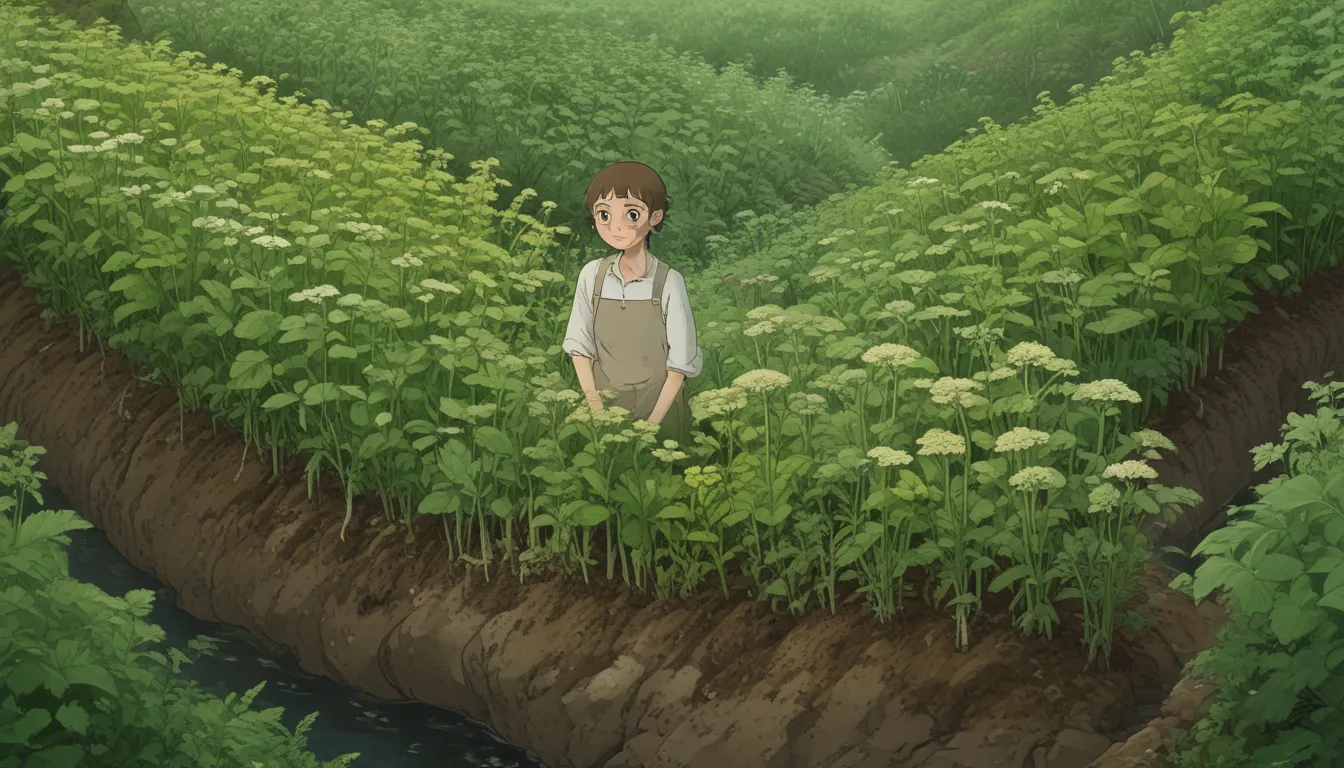How to Plant and Grow Horseradish: A Comprehensive Guide

Horseradish (Armoracia rusticana) isn’t just a plant that adds a sinus-clearing kick to your favorite dishes; it’s also a fascinating herb with a rich history and a variety of medicinal uses. Have you ever thought about growing your own horseradish to elevate your culinary creations and enjoy its health benefits? In this in-depth guide, we will explore the cultivation, history, propagation, growing tips, cultivar selection, pest and disease management, harvesting, storage, and cooking ideas related to this unique plant.
Discovering the Origins of Horseradish
Horseradish, a member of the Brassicaceae family, has a long and storied history dating back to at least 100 AD. Originating in modern-day Russia, western Asia, and southeastern Europe, this cold-loving plant has been cultivated for centuries for both its culinary and medicinal properties. From being featured in Ancient Greek and Roman medical texts to becoming a staple on the Passover Seder plate, horseradish has a rich and diverse heritage that continues to this day.
Cultivation and History
- Cold-loving Plant: Horseradish thrives in cool conditions, making it suitable for USDA Growing Zones 2 to 9.
- Planting Tips: Prepare the soil by incorporating well-rotted compost and maintaining a pH between 6.0 and 7.5. Ensure adequate drainage and sunlight exposure.
- Watering Requirements: Horseradish is drought-tolerant but needs consistent watering to prevent woody roots. Aim for at least two inches of water per week.
- Fertilization: Feed the plants with a mild, balanced fertilizer four and eight weeks after planting to promote healthy growth.
- Pest and Disease Management: Keep an eye out for flea beetles, beet leafhoppers, and fungal diseases such as leaf spot and rust. Use appropriate treatments to protect your plants.
Plant Propagation
- Root Cuttings: Horseradish is propagated using root cuttings or sets, as seeds are usually not available to home growers. Plant sets at a 45-degree angle with the square-cut end facing up for optimal growth.
- Planting Technique: Space the sets one foot apart and ensure consistent watering as the plants develop. Harvest roots by cutting away a portion with a root and leaf crown for continuous growth.
How to Grow Horseradish Plants
- Growing Conditions: Plant horseradish in full sun with well-draining soil. Consider raised beds or containers for better control over growth.
- Watering and Maintenance: Provide adequate water to prevent woody and bitter roots. Mulch around plants to suppress weeds and retain moisture.
- Harvesting: Harvest roots in late fall or early spring, leaving smaller root pieces behind for future growth. Store harvested roots in a cool, dark place for extended shelf life.
Horseradish Cultivars to Select
- Common vs. Bohemian Types: Horseradish plants are categorized into common and bohemian types based on leaf shape and root quality.
- Cultivar Recommendations: Look out for cultivars like ‘Big Top Western,’ ‘Czechoslovakian,’ ‘Improved Bohemian,’ ‘Maliner Kren,’ and ‘Variegata’ for varied flavors and disease resistance.
Recipes and Cooking Ideas
Get creative with how you use your homegrown horseradish in the kitchen. Experiment with sauces, cocktail mixers, salads, and other dishes to add a flavorful punch to your meals. Consider freezing grated horseradish for extended storage or drying roots and leaves for later use.
Quick Reference Growing Guide
- Plant Type: Herbaceous perennial
- Water Needs: Moderate
- Native to: Russia, southeastern Europe, western Asia
- Hardiness (USDA Zones): 2-9
- Bloom Time/Season: Fall, winter, spring
- Exposure: Full sun, partial sun
- Time to Maturity: 140 days
- Spacing: 12 inches
- Height: Up to 4 feet
Spice Up Your Garden with Horseradish
Embark on a flavorful journey by growing your own horseradish plant. Explore the diverse culinary and medicinal uses of this herb while enjoying the unique flavor it adds to your favorite recipes. Whether you’re a seasoned gardener or a beginner looking to expand your horizons, horseradish offers a delightful and rewarding growing experience.
Have you ever grown horseradish in your garden? Share your tips and experiences in the comments below and inspire others to take the plunge into cultivating this fascinating herb. If you’re interested in exploring more brassicas, check out our guides on growing broccoli, kale, and bok choy for a diverse and delicious garden harvest.
In conclusion, growing horseradish can be a rewarding and educational experience for gardeners of all levels. By following the tips and recommendations outlined in this comprehensive guide, you can cultivate a thriving horseradish plant and enjoy its many culinary and health benefits. From propagation to harvesting, storage, and cooking, there are endless possibilities to explore with this versatile herb in your garden. So roll up your sleeves, get your hands dirty, and spice up your garden with the bold flavors of horseradish!





